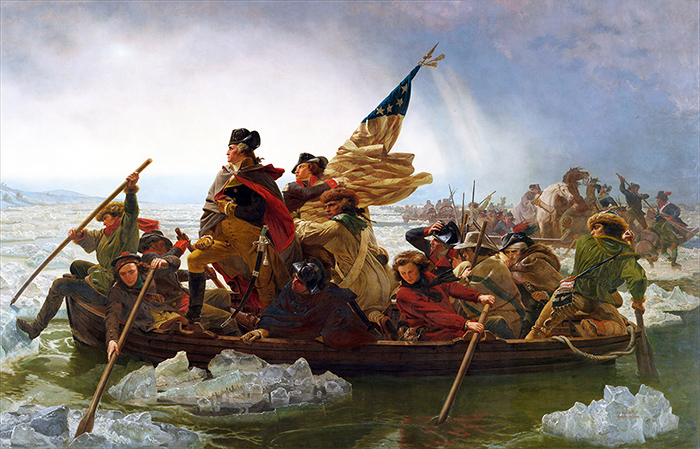The fabled crossing of the Delaware River by Gen. George Washington is immortalized in paintings, history books and film. Yet, the struggles endured by the Continental Army during that fateful night might have impressed upon our first commander-in-chief the importance of farriers.
Tactically, the subsequent invasion of Trenton accomplished little toward defeating the British. Yet, the victory buoyed the flagging spirits of the soldiers and the fledgling nation, and is widely regarded as a turning point in America’s battle for independence.
“It Blew A Hurricane”
Horses were critical to the war effort. While they were necessary for officers to effectively lead their troops, horses were essential for transporting weapons and munitions. It’s unclear exactly how many horses crossed, but there are some educated guesses.
“Historian Kemble Widmer suggests between 64 and 90,” writes William M. Welsch for the Journal of the American Revolution. “Most other writers make no mention of the topic. My own estimate is a bit higher, broken down as follows: the artillery — 29-32; senior officers and aides — 35; Philadelphia Light Horse troop — 24; ammunition carts — 7-14. That totals 95-105, an estimate at best and perhaps a bit low.”

“Washington Crossing The Delaware,” a 22-foot wide oil-on-canvas painting by Emanuel Leutze, is considered an iconic, if not flawed, depiction of the invasion of Trenton. Painting: Emanuel Leutze
Traction is a must under the best of conditions when transporting thousands of pounds of artillery and munitions over the dirt roads and pastures of Colonial America. Yet, on that Christmas night 240 years ago, the elements were conspiring against Washington’s carefully planned raid.
In an effort to avoid detection, the officers assembled the troops at 4 p.m. for their orders and began a 2-hour march to the river’s shore, which ensured that their arrival would be under the cover of darkness. A frigid drizzle descended upon the troops, hampering their progress.
Complicating matters further was the nation’s treasury — or lack thereof. Congress didn’t have enough money to adequately feed and clothe its troops. Many of the 5,000 soldiers in the Continental Army were underdressed. They had but rags wrapped around their feet, while others trudged over the frozen ground barefoot. If soldiers’ feet were unprotected, horses’ certainly weren’t a high priority.
“Many of the horses were unshod and thus slipped on the ice,” according to Horses Through Time, edited by Sandra L. Olsen. “At that time, the Revolutionary army had no farriers in its employment, and the lack of medical care greatly increased the number of horse casualties.”
By the time the majority of the army reached the launching point on the banks of the Delaware, the drizzle had turned to a driving rain. During the crossing, the storm escalated to a nor’easter that lashed the army with snow and sleet, making the difficult task of navigating the river — swollen with thick ice floes — all the more trying.
“It blew a hurricane,” one soldier was quoted in David Hackett Fischer’s 2006 book, Washington’s Crossing.
Henry Knox, Washington’s chief of artillery, wrote that the crossing was completed “with almost infinite difficulty.”
Although Washington’s crossing was completed in 9 hours, his plan included three total. The remaining two crossings — involving 2,600 troops — turned back when they proved too difficult. The 2,400 soldiers led by Washington successfully landed in New Jersey and resumed the march to Trenton at 4 a.m.
As history teaches us, the surprise invasion proved successful. The Americans suffered three dead and six wounded, while claiming 22 Hessians and wounding 98 others. The army took 1,000 prisoners and seized muskets, powder, and artillery.
What few texts reveal, however, is that just 2 weeks after the victory at the Battle of Trenton, Washington ordered the recruitment of 40 blacksmiths to work in a Pennsylvania shop to serve the military.
Coincidence?
Another of our country’s founding fathers — Benjamin Franklin — is credited with writing a variation of an age-old proverb that’s well regarded among farriers.
“For the want of a nail the shoe was lost,
For the want of a shoe the horse was lost,
For the want of a horse the rider was lost,
For the want of a rider the battle was lost,
For the want of a battle the kingdom was lost,
And all for the want of a horseshoe-nail.”
Washington might have been wise to suggest that Franklin begin his tome with, “For the want of a farrier ….”








Post a comment
Report Abusive Comment